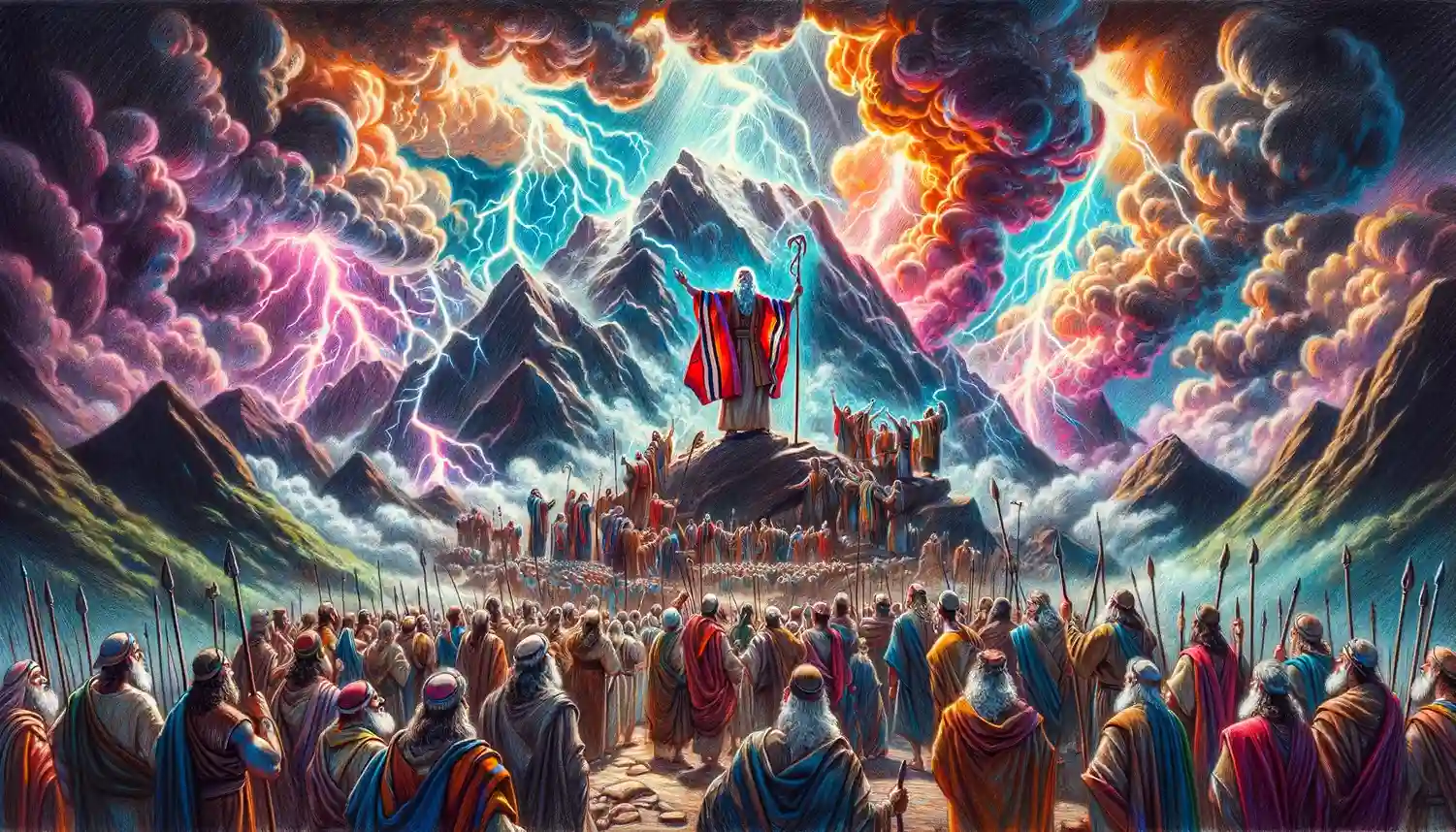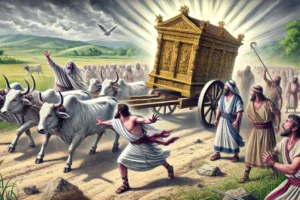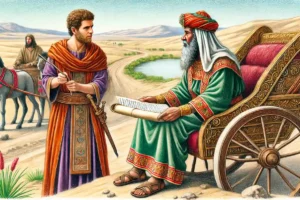
The Giving of the Law at Sinai
The Giving of the Law at Mount Sinai is a central event in the Biblical narrative of Exodus, representing a foundational moment in the covenant relationship between God and the Israelites. This event occurs in Exodus chapters 19 and 20, where God delivers the Ten Commandments to Moses on Mount Sinai.
- Arrival at Sinai: Three months after leaving Egypt, the Israelites arrive at the desert of Sinai and camp in front of the mountain, setting the stage for receiving the Law.
- God’s Proposal: God proposes a covenant with the Israelites, declaring that if they obey Him and keep His covenant, they will be His treasured possession among all peoples and a kingdom of priests and a holy nation.
- Preparation: The people are instructed to consecrate themselves and wash their clothes, preparing for the third day when God would descend upon Mount Sinai in a visible form.
- Theophany: A theophany occurs on the third day—thunder, lightning, a thick cloud, and a very loud trumpet blast signal God’s presence. Mount Sinai is enveloped in smoke because God descends on it in fire, symbolizing His holiness and power.
- Delivery of the Ten Commandments: God speaks the Ten Commandments directly to all the Israelites, outlining the ethical and religious principles they are to follow.
- Moses’ Role: After the initial revelation, Moses ascends the mountain to receive additional laws and instructions from God, which later form the comprehensive covenant code for Israelite society.
- People’s Reaction: Overwhelmed by the direct experience of God’s power, the Israelites ask Moses to speak to them instead of God, fearing that they would die if God continued to speak directly to them.
- Significance: This event is not only foundational for Jewish law but also forms the basis for Christian and Islamic ethical and moral teachings. The Ten Commandments continue to be a significant moral compass in various religious and secular contexts.
Contextual Background
The Giving of the Law at Mount Sinai, described in Exodus 19 and 20, is one of the most significant theological events in the Biblical narrative. This event occurs three months after the Israelites’ exodus from Egypt, marking a critical point in their transformation from a group of escaped slaves into a nation under God’s sovereignty.
Theological Insights
- Covenant Formation: The event at Sinai represents the formalization of a covenant between God and the Israelites. God’s offer to make the Israelites “a kingdom of priests and a holy nation” (Exodus 19:6) underscores His intention to set Israel apart for a unique purpose among the nations. This covenant is not only a set of laws but a calling to represent God’s holy character and purposes in the world.
- Theophany and Divine Manifestation: The dramatic theophany — God’s appearance accompanied by thunder, lightning, and smoke — is a powerful expression of God’s majesty and holiness. It serves to impress upon the Israelites the gravity and sacredness of the moment. This divine manifestation underscores the direct involvement of God in communicating His law and covenant to His people.
- Direct Revelation: The direct delivery of the Ten Commandments to the entire assembly of Israel is unique in the ancient Near East, where laws were typically conveyed through mediators. This direct interaction highlights the personal relationship God seeks with His people and the direct accountability of each individual to the terms of the covenant.
- Moses as Mediator: Following the initial direct revelation, Moses’ role transitions to that of mediator and intercessor between God and the people. This shift occurs as the people express their fear of God’s overwhelming presence and request that Moses speak to them on God’s behalf. Moses’ ascension up Mount Sinai to receive further laws symbolizes the mediation necessary for maintaining the covenant relationship.
Historical and Cultural Implications
- Lawgiving Tradition: The giving of the Law at Sinai connects with broader ancient Near Eastern lawgiving traditions, where kings would promulgate laws to establish order and justice. However, the biblical narrative emphasizes that these laws originate from God Himself, not a human ruler, marking a foundational difference in authority and sanctity.
- Ethical and Moral Framework: The Ten Commandments encompass duties to God as well as ethical duties to other humans, such as honoring parents, not murdering, and not stealing. These laws form the ethical backbone for not only Jewish society but have also influenced Christian and Islamic moral teachings, and by extension, Western legal and ethical norms.
Interpretation and Significance
- Symbolic Interpretations: Jewish, Christian, and Islamic traditions all hold the Sinai event in profound theological regard but interpret its implications through different theological lenses. For example, Christian interpretations often view the law as preparatory for the coming of Christ, who fulfills and transcends the law.
- Modern Relevance: The principles laid out at Sinai have enduring relevance in discussions about law, justice, morality, and the role of divine guidance in human affairs. The narrative invites reflection on how divine law can guide personal and communal life.
Conclusion
The Giving of the Law at Sinai is a foundational moment that defines not only the religious identity and ethical obligations of the Israelites but also offers profound insights into the nature of divine-human relationships and the pursuit of a just society under God’s sovereignty. This event’s lasting impact on religious thought and ethical jurisprudence underscores its significance in the biblical tradition and its enduring legacy in shaping moral conduct across cultures.



